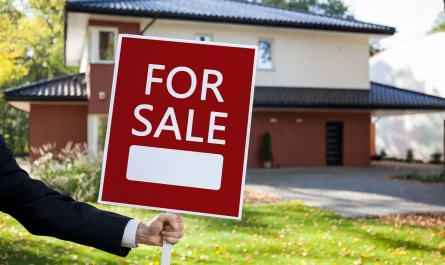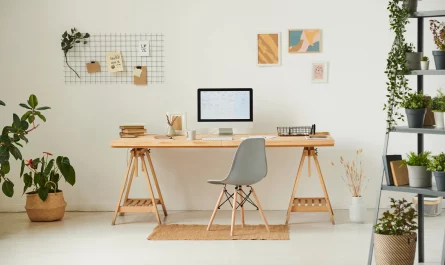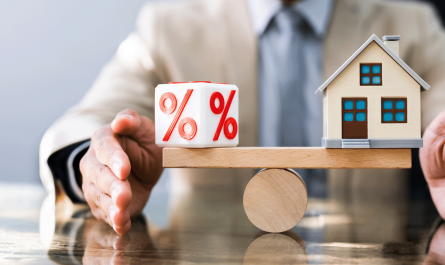Home staging plays a vital role in today’s competitive real estate market. It transforms an ordinary house into a welcoming, neutral space that buyers can envision themselves living in. Staging removes distractions and declutters each room. It presents the property as clean and well maintained. Moreover, staging reduces the time the home spends on the market. Studies indicate that staged homes sell significantly faster than unstaged homes, sometimes up to 73% faster. In addition, staged properties often achieve a higher sale price. When a home is neatly arranged, buyers feel more confident about the quality of the property.
Buyers can see how a space might be used for family gatherings, entertaining guests, or simply relaxing in comfort. Additionally, a staged home appears more spacious when furniture is arranged to enhance flow and open areas. Neutral décor allows buyers to imagine customizing the space with their personal touches. The strategic use of lighting, accessories, and furniture placement creates a harmonious environment that speaks to a wide audience. Also, staging removes personal artifacts that may limit a buyer’s vision. Instead, a home is presented as a blank canvas ready for a new chapter.
The benefits are both psychological and practical, as a staged home reduces buyer hesitation and increases competitive offers. Overall, the role of home staging is to maximize a property’s appeal and ensure a quick, profitable sale. This approach is a smart investment that delivers measurable returns, making it a key strategy for any homeowner looking to sell their property successfully.
The Importance of First Impressions

First impressions are crucial because they set the tone for the entire buying experience. When a buyer walks through the door, they seek to feel welcomed and inspired. A staged home conveys care and professionalism from the moment a buyer sees it. The first impression begins at the curb. A well-maintained exterior, fresh landscaping, and a neat front entry create an inviting image. Moreover, a staged entryway signals that the home has been prepared thoughtfully. Clean windows, a painted front door, and a tidy porch all contribute to a strong start. Once inside, the interior staging continues this positive impression. Decluttered spaces, neutral wall colors, and simplified décor create an environment that feels organized and expansive.
Every room is designed to highlight its strengths and downplay any flaws. Furthermore, first impressions are not only about visual appeal; they also engage a buyer’s emotions. A clean, uncluttered space feels calm and reassuring. When buyers are emotionally at ease, they are more likely to imagine themselves living in the property. In turn, this connection can lead to faster decision making and stronger offers. The visual consistency and narrative built by good staging invite buyers to form an emotional bond with the home. In today’s digital market, the importance of first impressions has grown even more as potential buyers filter listings based on photos and virtual tours.
Therefore, ensuring that your home makes an outstanding first impression is critical to generating interest and setting the stage for a successful sale. The cumulative effect of these carefully designed elements reinforces the idea that every aspect of the home has been considered. Thus, first impressions influence both the speed of the sale and the ultimate price achieved.
Decluttering and Depersonalizing the Home
Decluttering is the foundation of successful home staging. A clutter-free home gives buyers a clear view of the available space. When you remove unnecessary items, the room appears larger and more inviting. It is important to remove outdated décor, excess furniture, and personal items like family photographs. Depersonalizing the home further helps to create a neutral environment that appeals to everyone. Buyers need to see the home as a blank canvas where they can envision their future. In addition, removing clutter highlights the home’s architectural details.
When surfaces are clear, the quality of the space is more apparent. Decluttering is not only about aesthetics; it also has a practical side. A less cluttered home appears more organized and shows that the property has been well maintained. Moreover, buyers get a sense that there is ample storage space when closets and cabinets are emptier. This is a significant selling point. Additionally, depersonalizing helps reduce emotional barriers that buyers may face. When personal artifacts dominate a room, buyers struggle to imagine themselves living there.
Instead, a neutral space allows them to project their own ideas and lifestyle. For instance, a dining table should not be crowded with memorabilia or personal collections. Instead, it should be styled with a few tasteful items that suggest a welcoming family environment. Furthermore, decluttering communicates that the seller is serious about the sale. It shows that extra effort has been made to prepare the home for the market. Simple actions, such as organizing the kitchen, cleaning out the attic, and tidying up outdoor spaces, contribute to a harmonious presentation. When every room is free of unnecessary items, the home appears more spacious and thoughtfully curated.
Neutral Color Palettes and Light Enhancements
Adopting a neutral color palette is a key strategy in home staging. Neutral colors, such as soft whites, beiges, and light grays, create a timeless backdrop that appeals to most buyers. When walls are painted in neutral tones, the room appears larger and brighter. This simplicity allows buyers to imagine their own décor seamlessly fitting into the space. Furthermore, neutral colors reduce distractions and make the area feel open and clean. In many cases, the home’s natural features, like unique architectural details or expansive windows, can be better showcased with a subdued backdrop.
This approach also offers flexibility. Buyers are more likely to appreciate a home that does not force a particular personal style upon them. Moreover, neutral tones can be accented with small pops of color through accessories, such as pillows or artwork, that add character without overwhelming the eye. In addition to neutral colors, effective lighting plays a critical role in staging. Natural light should be maximized by keeping windows unobstructed and clean.
When a room receives ample sunlight, it feels more energetic and inviting. At the same time, supplemental lighting, such as floor or table lamps, creates warmth and a cozy atmosphere during evening showings. Proper light enhances textures and colors in the home, which supports a balanced and appealing presentation. Furthermore, a room with balanced lighting draws the buyer’s eye to its best features, such as a beautiful fireplace or a stunning piece of art. The combination of neutral colors and optimal lighting creates an environment that is both fresh and welcoming.
Enhancing Curb Appeal and Exterior Presentation
Curb appeal is the visual impression of your home from the street, and it is the first thing a buyer notices. Enhancing curb appeal requires attention to detail and coordinated improvements. Start by ensuring that the exterior of your property is immaculate. This means that the façade, windows, and front door should all be in top condition. A fresh coat of paint on the front door and cleaning of the windows can have a significant impact. Moreover, the front yard should be well maintained.
Keeping the lawn trimmed, the shrubs pruned, and seasonal flowers planted creates an inviting environment. Simple touches, such as new house numbers or decorative lighting, add a modern touch to the exterior. In addition, an appealing entryway sets the stage for what lies beyond the front door. A clean and well-decorated porch, with a new doormat and potted plants, welcomes visitors and exudes warmth. Furthermore, outdoor furniture can be used to suggest potential uses of the outdoor space.
For example, a small seating arrangement on the patio or a charming bench in the garden can imply an area for relaxation or entertaining. Additionally, ensuring that pathways and driveways are clear and free of debris is important. These elements contribute to a cohesive and well-kept look that impresses buyers before they even step inside. In today’s digital age, curb appeal is also critical for online listings. High-quality exterior photos are often the first point of contact and can determine whether a buyer chooses to explore further. As a result, investing time and money in enhancing curb appeal is essential. This unified approach to exterior presentation creates a strong first impression that not only draws buyers in but also sets a positive tone for the rest of the home staging process.
Furniture Arrangement for Optimal Flow and Space Utilization
Arranging furniture correctly is essential for making a home feel spacious and inviting. The layout of the furniture creates the flow of a room and helps delineate distinct areas within a space. When furniture is arranged thoughtfully, it can highlight the best features of the property. Begin by ensuring that each room has a clear focal point. For instance, in the living room, the main seating area should encourage comfortable conversation and showcase the available space. Remove extra or oversized furniture that creates clutter or disrupts the natural flow. Instead, use select, well-sized pieces that match the scale of the room.
In addition, leave enough room for movement between furniture pieces. It is beneficial to maintain open pathways that allow buyers to easily circulate. This setup not only enhances the appearance of the room but also makes it functional. Furthermore, the positioning of key furniture items can emphasize the room’s strengths, such as a large window or an architectural feature.
For example, placing a sofa in a way that faces a fireplace can create a cozy focal area. Additionally, consider the use of area rugs to define spaces without overwhelming them. Rugs can help anchor a seating arrangement and add texture to the room. Make sure that the furniture is arranged in a balanced way to avoid overcrowding or uneven distribution of visual weight. This will create a harmonious atmosphere that feels both modern and comfortable. Also, consider using multipurpose furniture in smaller rooms to maximize space efficiency. This strategy demonstrates the full potential of each room while maintaining an inviting and airy feel. Through these careful considerations, furniture arrangement can dramatically improve the overall perception of the home and influence buyers’ decisions favorably.
Accessorizing with Purpose to Create Impact
Accessories bring personality and style into a well-staged home when used with purpose. They add visual interest and can serve as subtle focal points. In a staged home, accessories must be chosen carefully so that they complement the overall aesthetic. Start by selecting a few statement pieces that resonate with the desired style. For example, decorative cushions in soft, neutral colors can add a layer of comfort to a living area, while a carefully chosen piece of artwork can serve as a conversation starter. It is vital to keep the décor minimal yet impactful. Avoid cluttering the space with too many items. Instead, choose quality over quantity. Use fresh flowers or a bowl of fruit to introduce a natural element that is pleasing to the eye and the nose. Additionally, consider the texture and material of accessories.
Soft throws, elegant vases, or subtle sculptures can add depth to a room without distracting the buyer from the overall theme. Accessories should also be cohesive with the colors and styles already present in the room. When you integrate these elements with care, they contribute to a unified look that enhances the home’s appeal. Furthermore, accessories can offer hints about how a space might be used. For example, a well-set dining table can suggest a welcoming environment for family meals or gatherings. Creative use of lighting accessories, such as stylish lamps and sconces, can further accentuate key features of the home. In summary, accessorizing with purpose requires careful selection and thoughtful placement. When done right, it elevates the space, underscores the design strategy, and creates a memorable and enticing environment for buyers.
The Unified Approach to Staging Every Room in the Home
A successful home staging project embraces a unified approach that ties every room together. In this strategy, no area is left disconnected from the overall vision. Every room is a piece of a larger narrative that the buyer will experience when they walk through the house. The living areas, bedrooms, kitchens, and even the outdoor spaces should share a consistent aesthetic. This consistency creates a seamless flow that makes the home feel larger and more balanced. For example, using a neutral color palette throughout the home sets the stage for a cohesive look.
Furniture and accessories should also follow a similar design theme so that every room complements the next. Instead of treating each room separately, consider the property as one complete unit. This approach enhances the buyer’s ability to imagine a lifestyle that spans the entire property. Moreover, a unified staging strategy prevents the home from feeling disjointed or chaotic.
When elements in one room clash with those in another, it disrupts the buyer’s experience. Instead, coordinated décor choices and thoughtful layout planning allow the space to tell a coherent story. In addition, consistency in design can be achieved by using similar textiles, color schemes, and art pieces across different rooms. This method strengthens the overall appeal and helps the buyer see the property as a harmonious whole. In addition, a unified approach minimizes distractions and directs attention to the home’s best features. When the entire property feels connected, buyers are more likely to appreciate its potential and feel a strong emotional connection. This strategy serves as the backbone of effective home staging and is crucial for achieving a quick and profitable sale.
The Emotional Impact of Home Staging on Buyers
The emotional appeal of a staged home cannot be overstated. Every detail, from the layout to the décor, is designed to evoke positive emotions in potential buyers. When a home is staged, it triggers feelings of comfort and aspiration. Buyers are often overwhelmed by the idea of starting a new chapter in their lives, and a well-staged home offers clarity and inspiration. The calm, clutter-free environment helps to ease any anxiety that buyers may feel about the unknown. It allows them to project their own ideas and dreams onto the space. Moreover, a staged home makes it easier for buyers to visualize their future there. When personal items and clutter are removed, the buyer can imagine how their own furnishings will look in the space. This transformation plays a significant role in forming an emotional connection.
Additionally, a home that is staged with care communicates that the property is well maintained. This sense of quality and attention to detail builds trust. The buyer is more likely to feel that the home is a safe investment. Furthermore, carefully staged rooms use sensory elements to enhance the experience. Pleasant aromas, soft background music, and inviting textures all contribute to a multi-sensory experience. When buyers feel emotionally engaged, they are more motivated to take action. The result is a heightened desire to own the home, often leading to faster offers and better negotiation leverage. Overall, the emotional impact of staging turns a simple visit into a memorable experience that resonates deeply with buyers.
Professional Versus DIY Staging: Choosing the Right Approach
When it comes to staging your home, you have two main options: professional staging or a DIY approach. Professional stagers bring their expertise to the table. They have experience in transforming spaces to appeal to a wide audience. Professionals often have access to a vast inventory of furniture and décor that is not only stylish but also carefully curated to enhance the property’s strengths. Their services typically cost between a few hundred to several thousand dollars. However, many sellers see this as an investment that can result in faster sales and higher offers.
In contrast, a DIY staging approach allows the homeowner to take charge of the transformation. This method can be more budget-friendly. Homeowners can use affordable items from stores such as B&M Bargains, IKEA, or local outlets to refresh their space. When using a DIY approach, it is crucial to follow the same staging principles: declutter, depersonalize, and maintain a neutral color palette.
The DIY route requires more time and effort, but many resources are available online to guide you. For instance, various blogs, YouTube channels, and social media platforms offer step-by-step instructions. Regardless of the method you choose, the key goal is to create a space that appeals to buyers and meets the criteria of modern home aesthetics. Both professional and DIY staging require careful planning and attention to detail. It is important to evaluate your budget, timeline, and personal capabilities. When you choose the right approach for your situation, the results are often dramatic. Whether you hire a professional or do it yourself, every decision should aim to maximize the appeal of each room in your home.
Evaluating the Costs and Returns of Home Staging
Investing in home staging is a strategic decision that can yield significant returns. Staging costs vary depending on the method and scope of work. Professional home staging can cost anywhere between a few hundred and several thousand dollars. Typically, these expenses range from 1% to 3% of the home’s listing price. It is important to view staging as an investment rather than an expense. Research indicates that staged homes sell faster and often fetch higher offers than those that are not staged. In many cases, buyers are willing to pay a premium for a move-in ready property. This increase in sale price can far outweigh the initial staging costs. When you consider the reduction in time on market, you also save on holding costs. These can include mortgage payments, utilities, and insurance. Sellers benefit from a faster turnover, which can minimize financial stress during the selling process.
On the other hand, if you choose a DIY approach, the costs can be significantly lower. You may invest in fresh paint, deep cleaning supplies, or a few decorative pieces from budget-friendly retailers. Although the DIY route requires more personal effort, it can still produce attractive results if executed correctly. It is also possible to combine both methods. For instance, you can stage the most impactful rooms professionally while handling others yourself. In every scenario, measuring the return on investment is key. Look at comparative market data and consider how staging has affected similar sales in your area. By doing so, you ensure that your staging budget is justified by the potential increase in sale price and the quicker closing process. A well-staged home can stand out in a competitive market and lead to a more profitable outcome overall.
Virtual Home Staging: The Digital Alternative for Modern Sellers
Virtual home staging is a revolutionary approach that uses digital tools to enhance property photos. This technique places digital furniture and décor into images of empty rooms. It is highly popular among real estate professionals because it is both fast and cost-effective. Virtual staging typically costs over 90% less than traditional physical staging. Sellers benefit from this method by being able to update listings quickly and maintain a polished online presence. High-quality virtual staging allows buyers to see the potential of a vacant property. It creates realistic images that highlight space and design possibilities. Digital staging is ideal for properties that are empty or in need of a visual refresh. Furthermore, virtual staging works well as a complement to physical staging. While the property may be staged physically for in-person showings, virtual staging enhances online listings and draws in more initial interest.
The technology behind virtual staging has advanced, and today’s images are highly convincing. Digital staging can even be modified if buyer feedback suggests changes. This method offers flexibility and speed that traditional staging lacks. It is especially useful in today’s fast-paced digital market, where buyers expect immediate, attractive visuals. Virtual staging also allows for creative experimentation. Sellers can try different styles and layouts without incurring the cost of moving physical items. Overall, virtual home staging provides a modern, efficient solution to showcase your home’s potential. It is a valuable tool in the marketing arsenal of any seller who wishes to maximize both appeal and efficiency in the online marketplace.
Integrating Technology and Social Media for Enhanced Marketing
Marketing a staged home requires a robust digital strategy. Technology and social media have transformed how properties are presented to buyers. High-quality photos and video tours are essential in today’s market. Professional photography shows the home at its best and draws the attention of potential buyers. Virtual tours enable viewers to explore the space from anywhere. In addition, virtual staging enhances digital listings by offering realistic representations of furnished rooms. Social media platforms like Instagram, Pinterest, Facebook, and YouTube are powerful tools to reach a broad audience. Sellers can share before-and-after images to demonstrate the staging process. Effective use of hashtags, such as #HomeStaging and #PropertyForSale, increases visibility. Captivating captions and engaging posts build interest and drive traffic to online listings. Digital marketing also allows for targeted advertising.
You can reach specific buyer segments based on location, demographics, and interests. Furthermore, interactive platforms allow potential buyers to ask questions and receive immediate feedback. This level of engagement strengthens the buyer’s connection to the property. Technology also supports efficient communication between sellers, agents, and stagers. Online tools help schedule showings, track feedback, and update marketing materials in real time. The integration of technology and social media into the home staging process is not just beneficial but necessary in a digital-first marketplace. By leveraging these platforms, you can extend the reach of your staging efforts and secure more buyer interest. Every digital interaction contributes to building a strong online presence that supports a faster and more profitable sale.
Measuring the Success and ROI of Home Staging
It is essential to evaluate the success of home staging to understand its impact on the sale process. Sellers can measure this success by tracking several key metrics. One critical metric is the time a property spends on the market. A well-staged home typically sells much faster than one that is not staged. This rapid turnover reduces holding costs, such as mortgage payments, utilities, and insurance. Another important metric is the final sale price. Data shows that staged homes often command higher offers, sometimes increasing the sale price by several percentage points. Sellers should also gather feedback from real estate agents and potential buyers. This qualitative feedback can offer insights into which staging elements resonated most. Additionally, professional photography and virtual tours allow sellers to compare the pre-staging and post-staging appeal of their listings. By tracking these indicators, sellers can determine the return on investment (ROI) of their staging efforts.
In many cases, the increase in sale price and reduction in time on market outweigh the costs of staging. This evaluation process is crucial for sellers who plan to stage more than one property or who wish to refine their approach in the future. Every dollar spent on staging should be considered an investment that leads to financial gains and a smoother sale process. Regularly reviewing staging success helps build a record of achievements that can be referenced in future projects. Overall, quantitative and qualitative measures together provide a clear picture of how staging efforts are contributing to a successful sale. This comprehensive evaluation reinforces the long-term value of home staging.
Long-Term Benefits and Emerging Trends in Home Staging

The benefits of home staging extend well beyond the immediate sale. A well-staged home leaves a lasting impression that can raise the overall standards of a neighborhood. Buyers who see beautifully staged homes may develop higher expectations, which can boost property values over time. In addition, the skills and techniques learned from staging projects apply to future home improvement endeavors. Moreover, home staging is evolving with emerging trends. One of the most notable trends is the move toward sustainable and eco-friendly staging practices. Buyers now appreciate energy-efficient lighting and green décor options. Another growing trend is the use of virtual staging. Technology continues to advance, and virtual staging is becoming more realistic, cost-effective, and widely accepted.
Augmented reality tools are also emerging, allowing buyers to interact with a home’s layout in real time. These innovations provide additional flexibility for sellers, enabling dynamic updates to online listings. Furthermore, the continued integration of social media and digital marketing into home staging will shape how properties are presented. Future staging strategies will likely become more customized and data-driven, using buyer analytics to fine-tune the presentation. Long-term benefits include a faster sale, higher offers, and an enhanced reputation for the property and neighborhood. As these trends mature, home staging will become an even more critical part of the real estate process. Sellers who invest in staying current with staging techniques will enjoy sustained success and a competitive advantage in the market.
The Impact of Communication and Team Collaboration in Home Staging
Effective home staging relies on clear communication and strong collaboration among all parties involved. Sellers, professional stagers, interior designers, and real estate agents must work together to achieve the best results. Open communication ensures that everyone understands the vision for the home and the specific tasks involved. Team collaboration brings diverse expertise to the project, which enhances the final presentation. For example, professional stagers know which furniture arrangements maximize space, while interior designers can advise on color schemes and textures. Real estate agents provide insights into the local market and buyer expectations. When these experts work together, the result is a unified and appealing home presentation. Additionally, ongoing communication with buyers during showings helps identify any areas that may need further improvement.
Regular updates and feedback sessions ensure that the staging remains aligned with market trends and buyer preferences. Technology also supports collaborative efforts. Digital project management tools, video conferencing, and shared files enable seamless coordination, even when team members are in different locations. This level of teamwork is essential for executing a complex staging project successfully. Every stakeholder must contribute and remain open to constructive criticism. Such collaboration builds a strong foundation for a property to stand out in the market. Clear and continuous dialogue throughout the staging process not only improves the quality of the final setup but also drives a smoother, more efficient sale. Communication is, therefore, a fundamental component of successful home staging.
Conclusion
Home staging is a transformative process that sets a property apart from the competition. This comprehensive guide has covered various aspects of staging, including decluttering, neutral color palettes, proper furniture arrangement, and strategic accessory use. Each element plays a role in creating a balanced, inviting, and cohesive space that appeals to modern buyers. Effective staging integrates the benefits of both professional and DIY approaches and leverages technology for virtual enhancements. The process leads to faster sales, higher offers, and reduced marketing time, making it a smart investment for sellers. Additionally, the emotional and psychological impact of a well-staged home cannot be understated. Buyers who feel comfortable and inspired are more likely to commit and negotiate strongly.
Every decision, from enhancing curb appeal to maintaining a unified design throughout each room, contributes to the overall success of the home sale. Clear communication, teamwork, and continuous evaluation further strengthen the staging strategy. Ultimately, the insights and strategies discussed in this guide serve as a roadmap for turning any property into an irresistible buyer magnet. We hope this extensive resource empowers you to stage your home effectively and achieve a successful sale. May your property shine in every listing photo and during every showing, leading to a swift and profitable transaction.



